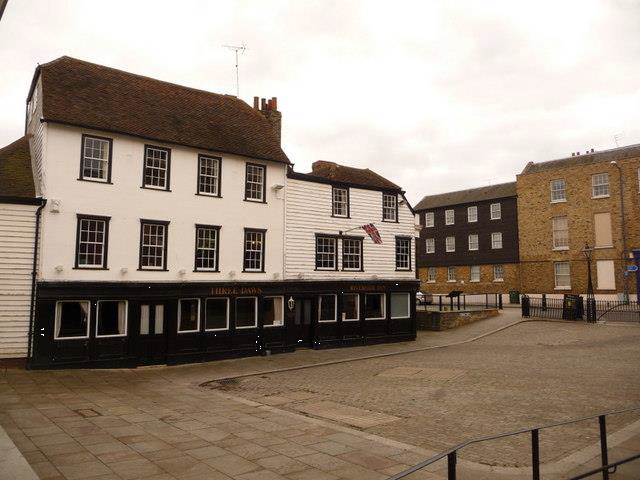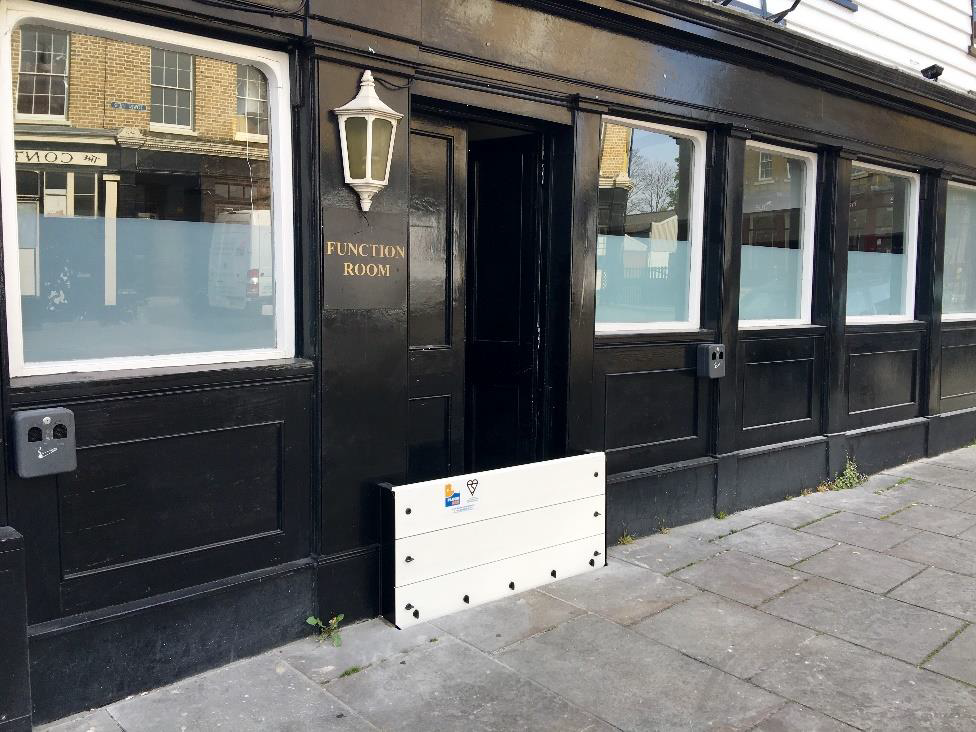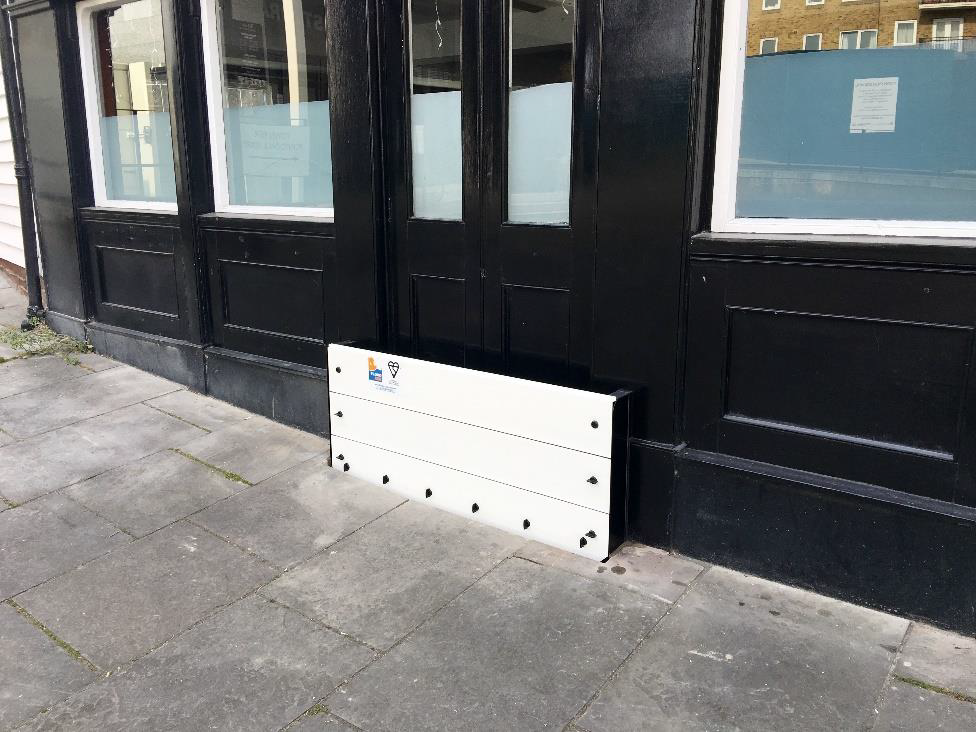The Three Daws Public House Town Pier Royal Pier Road Gravesend
The building dates from 1488 and was serving ales by 1551. This is said to be oldest public house in Gravesend, with many passages and stairs to aid smugglers and those hoping to escape the press gang. Its earlier name was the "Cornish Chough," and later the "Three Cornish Choughs." It may have been associated with pilgrims crossing the river en route to Canterbury; the three Cornish Choughs are on the Canterbury arms. It was originally five wood fronted cottages probably dating as early as 1488. Its wooden structure thought to be the work of shipwrights. Once used as a hotel it had eleven bedrooms, connected by five staircases. It remains open today (2018).
The Three Daws, a Grade II listed building on the east side of the Town Pier square, is now the oldest public house in the town and probably the oldest pub in Kent with its mixture of timber framing, weatherboarding and tiled roof. The "Three Daws" and the Old Pilots' House to the rear (now demolished) are reported to have had seven staircases and three underground tunnels enabling sailors to escape the press gang and smugglers to ply their trade.
By some miracle, the "Three Daws" escaped the many fires, in spite of its wooden construction. Its earlier name was the "Cornish Chough" (1488 1707), and later the "Three Cornish Choughs" (1707 1778). In 1582, the innkeeper was Ralph Wellett. It seems to have been associated with pilgrims crossing the river on their way to the shrine of St. Thomas, the three Cornish Choughs appearing in the arms of Canterbury City. A reference to it as the "Three Daws" appears in the Gravesend Register of 1667.
In October 2015, Flood Fortress part of the Durey Group were asked by Southern Water to visit the site of The Three Daws Public House Gravesend.
The premises is located within a low lying area of block paving at Town Pier, at the junction of High Street /West Street Gravesend. In storm conditions surface water cascades down the steep incline of the High Street and pools within the paved area outside the public house. The water level rises to an approximate depth of 500mm.
Working with Southern Water and the Conservation Architect from the local heritage department at the Gravesham Borough Council. We obtained "Planning (
Listed Buildings And Conservation Areas) Act 1990 town And Country Planning (Listed Buildings And Buildings In Conservation Areas) Regulations 1990" to install Flood Boards to the 3 side entrances of the public house. Listed Building Consent requested the colour of the side frames fixed onto the building shall be painted black to match the colour of the building and the footplate to be powder coated grey to match the colour of the stonework/paving on the ground.. Our flood protection system had the bottom element of the frame recessed into the ground and a removable powder coated aluminium cover plate. The aluminium Cover Plates also required a powder coating in Black RAL9005.
The works were successfully completed within a three day period without disruption to the commercial business or its customers.
This board system requires the customer to check the local flood risk warnings provided by the Met Office. When the information states a possible flood conditions may occur, the boards need to be inserted into the rails.
In 2018 Gravesend experienced a combination of a tide lock situation.
This is when rainfall is unusually heavy over a short length of time, along with unseasonal high tides, resulting in the tide flaps along town pier being unable to open to allow surface water to drain. Taking into account all these events, the area outside the Three Daws suffered a large extent of flood water pooling. Local media reported from this area, highlighting the vast amount of water collecting at the Town Pier entrance but also clearly showing our flood board installation held, protecting the pub.









